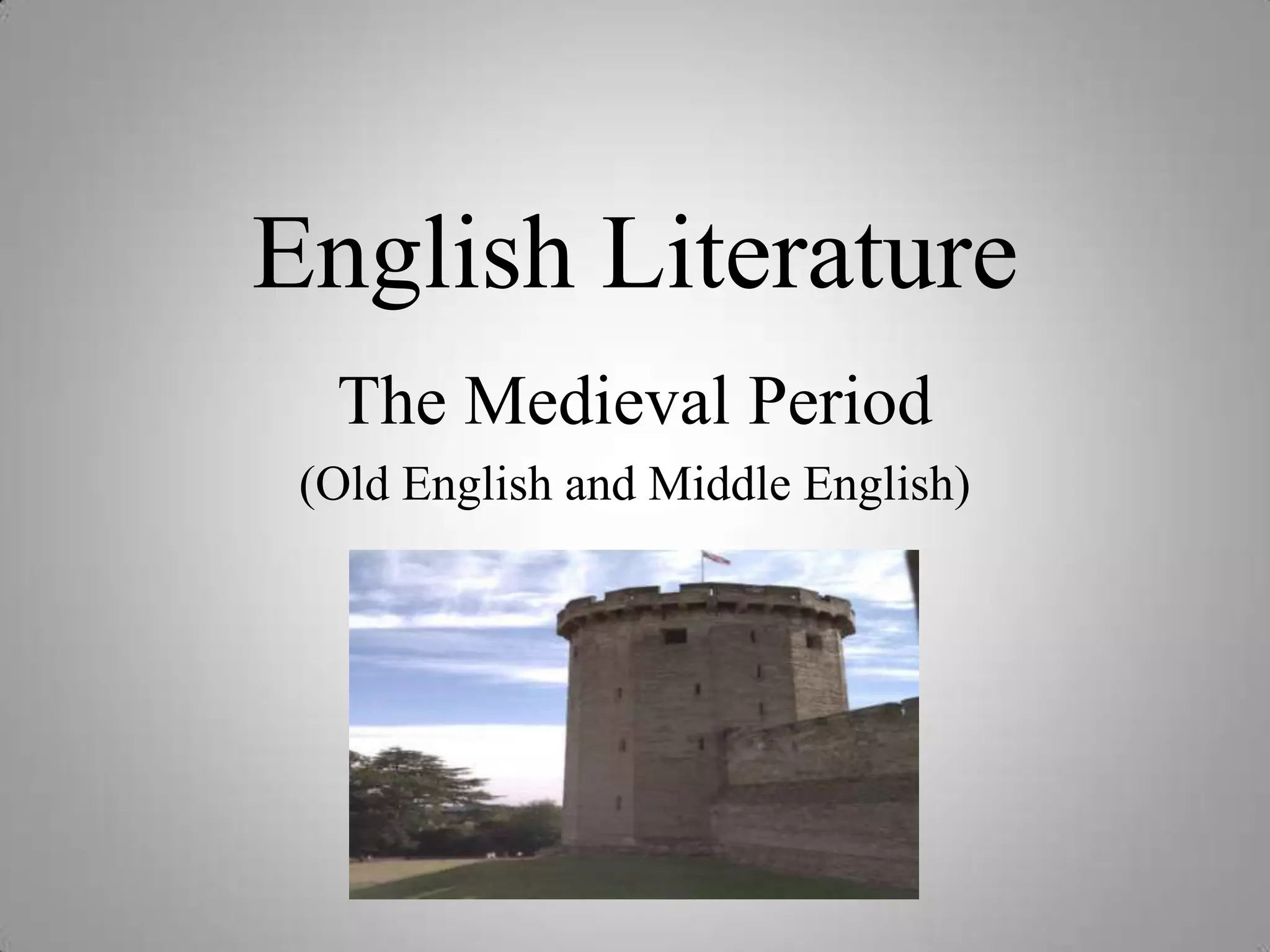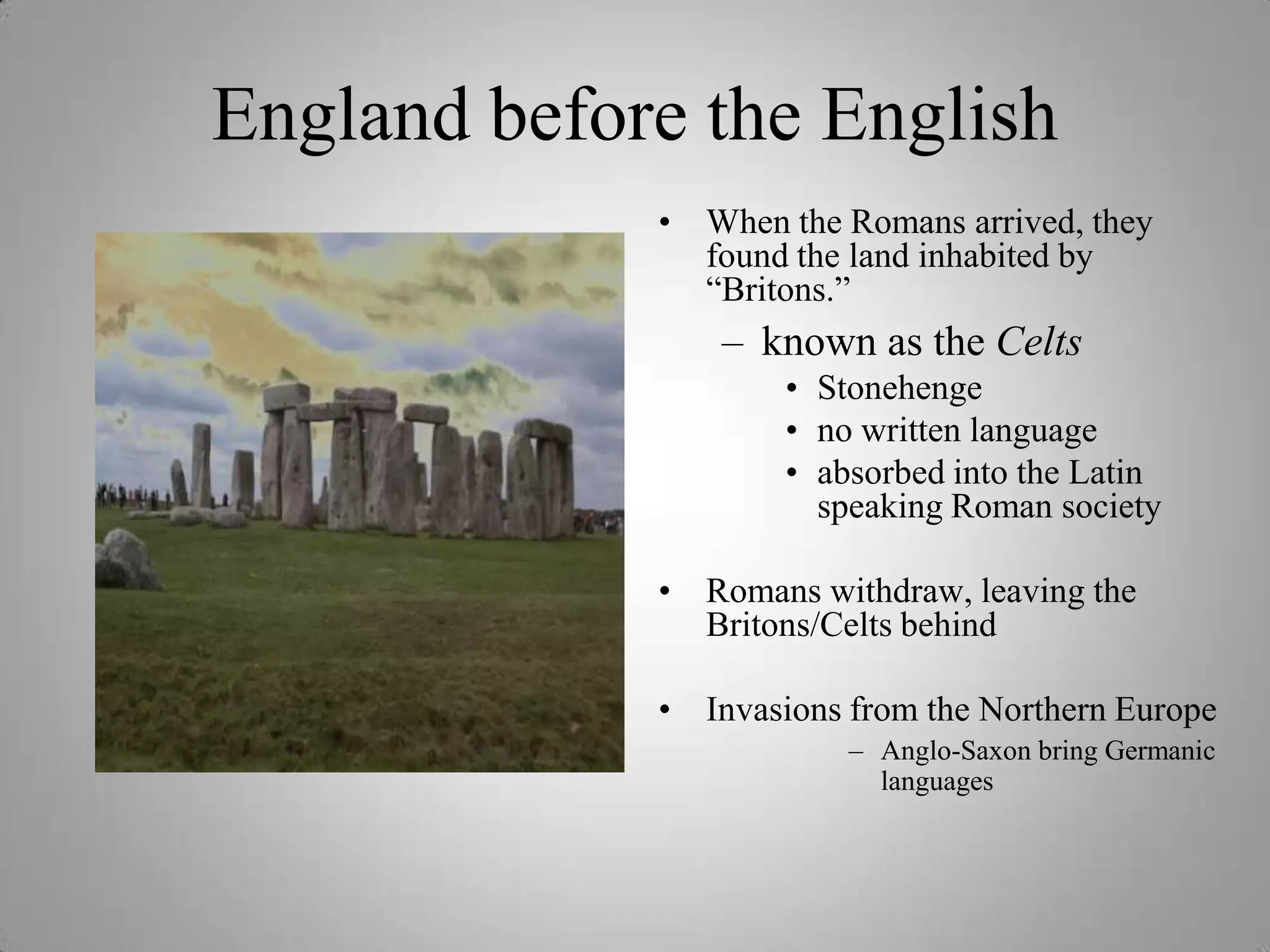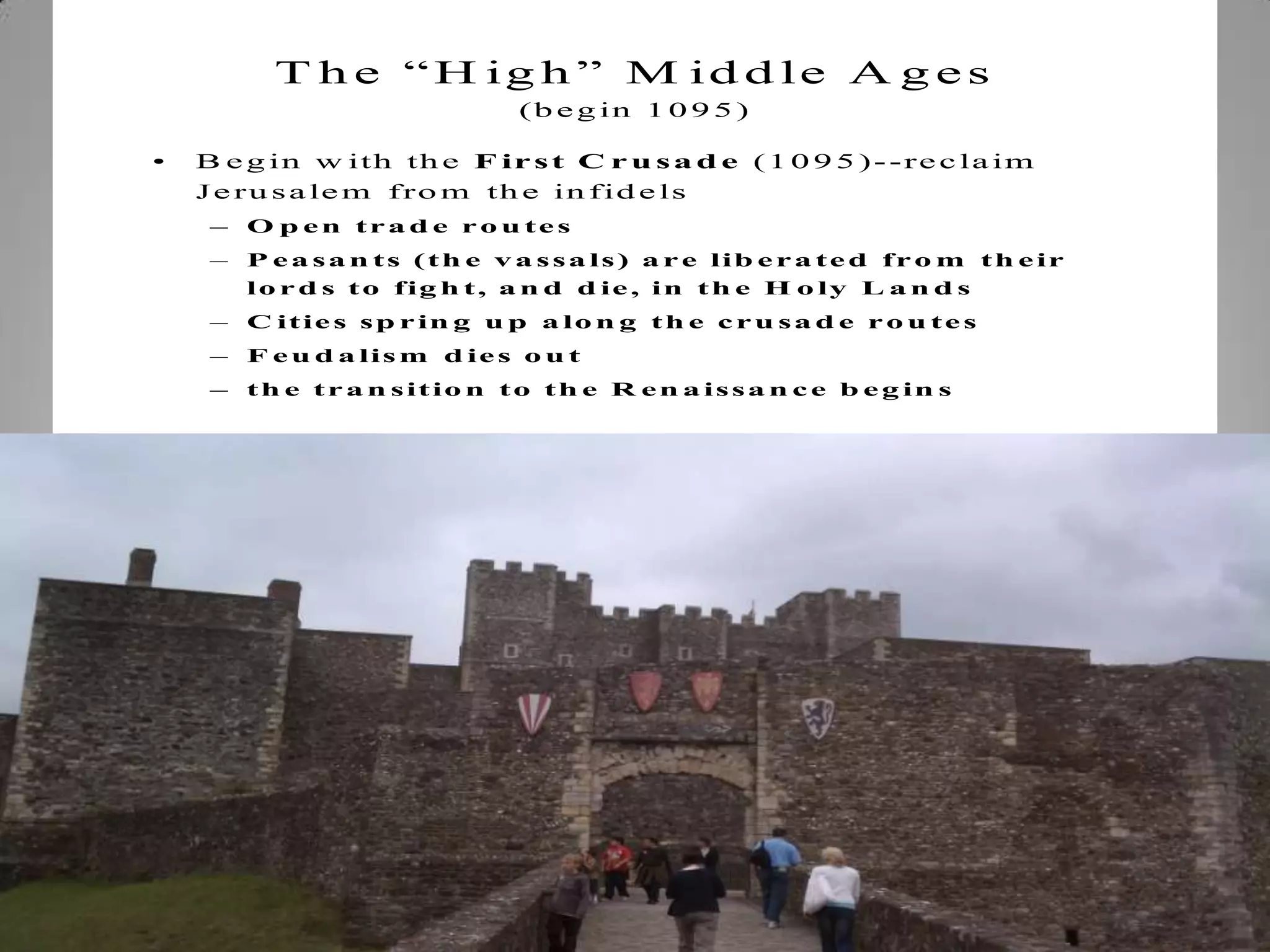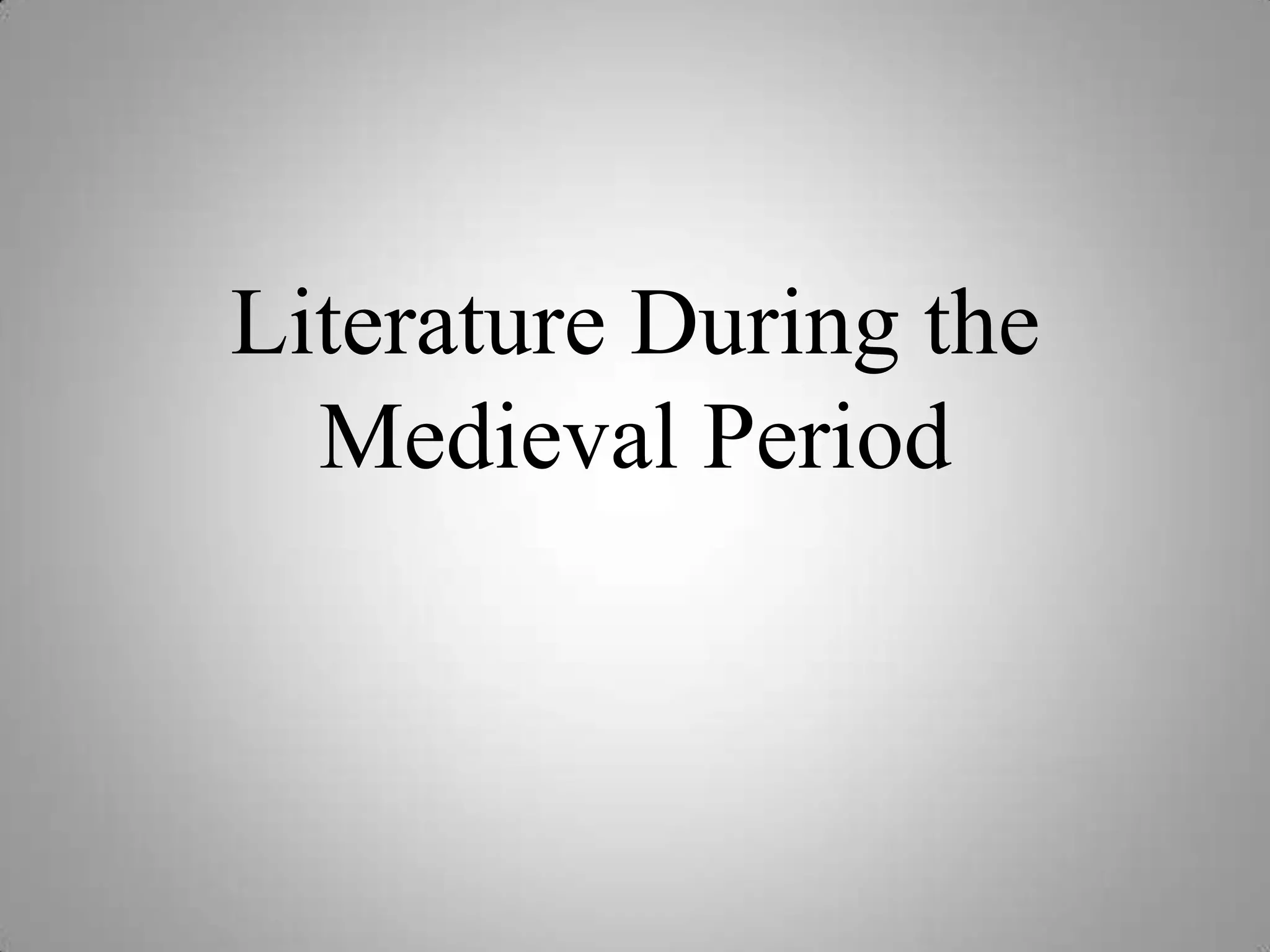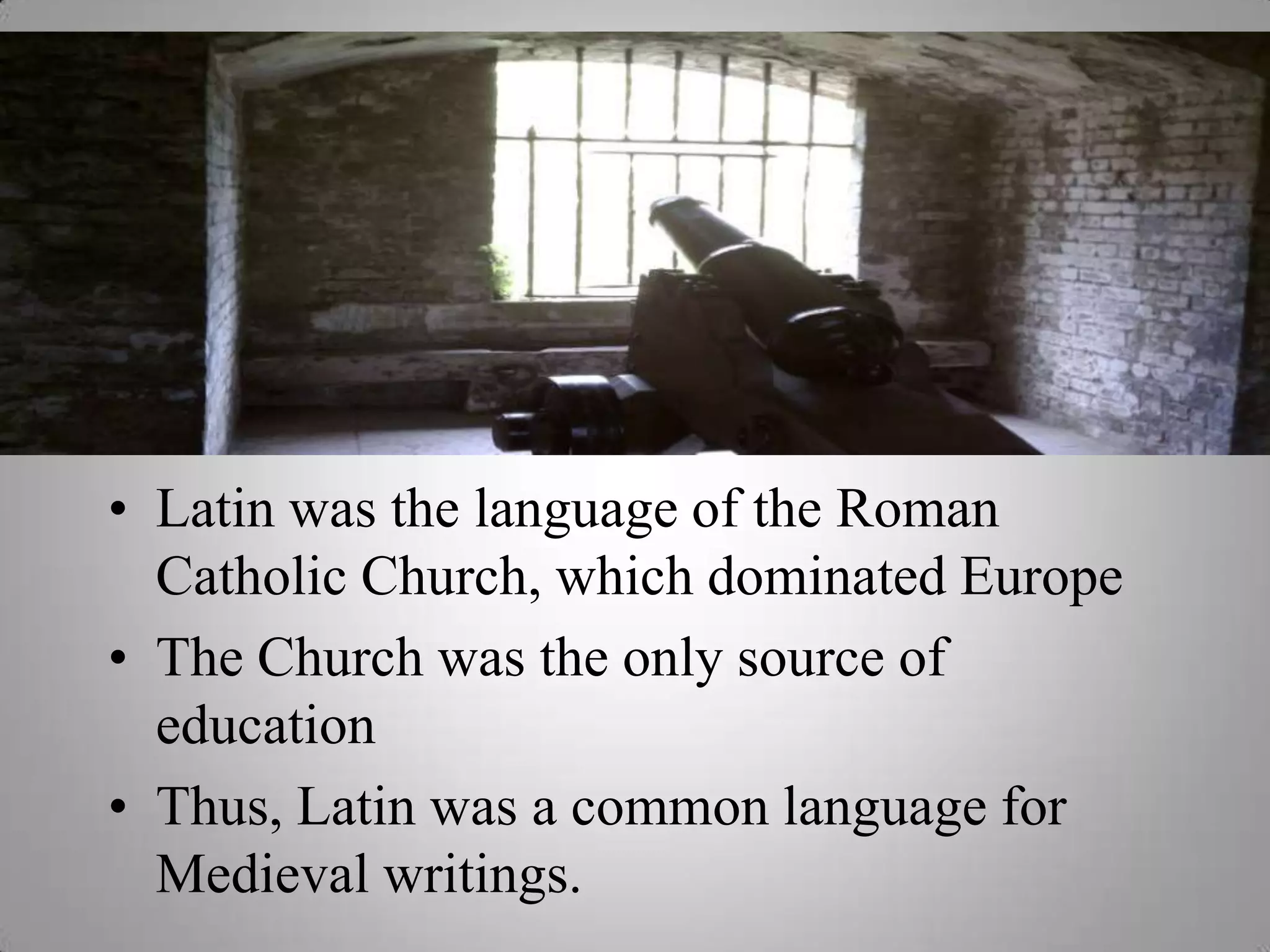The document provides an overview of literature during the Medieval period in England. It discusses the three main languages used - Latin, French, and English. Major genres included troubadour poetry, Arthurian legends, epic romances, religious poetry, and fabliaux. Characteristics of Medieval literature included themes of heroism, presentations of idealized behavior like loyalty and chivalry, and the use of poetic devices like kennings. The ideal of courtly love and the knightly quest were also important concepts in Medieval literature.
